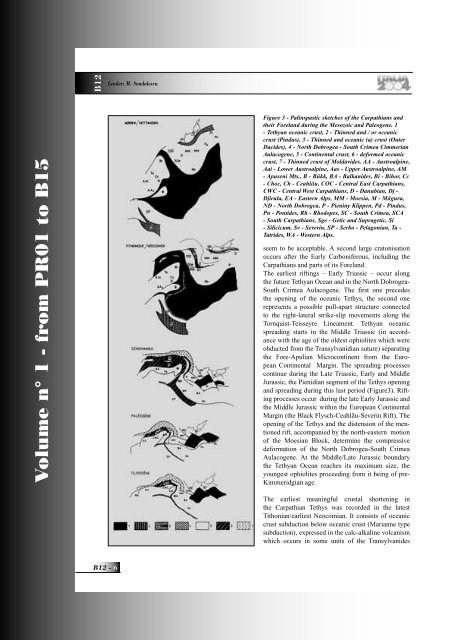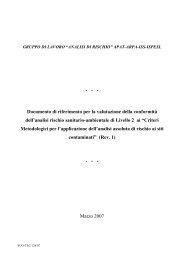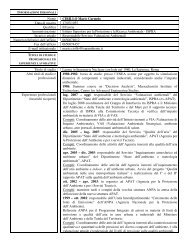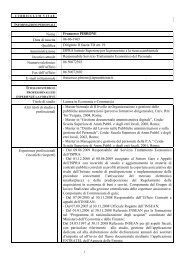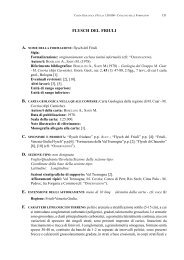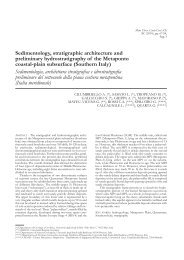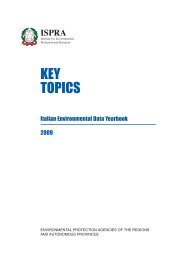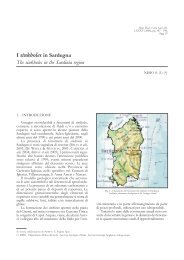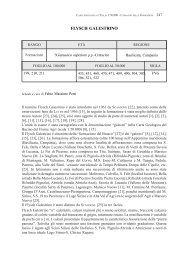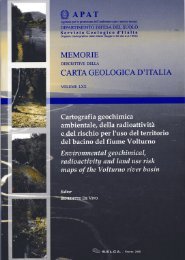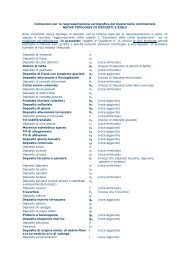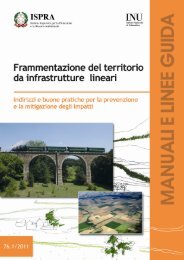Guidebook - Ispra
Guidebook - Ispra
Guidebook - Ispra
Create successful ePaper yourself
Turn your PDF publications into a flip-book with our unique Google optimized e-Paper software.
Volume n° 1 - from PR01 to B15<br />
B12<br />
B12 -<br />
Leader: M. Sandulescu<br />
Figure 3 - Palinspastic sketches of the Carpathians and<br />
their Foreland during the Mesozoic and Paleogene. 1<br />
- Tethyan oceanic crust, 2 - Thinned and / or oceanic<br />
crust (Pindus), 3 - Thinned and oceanic (a) crust (Outer<br />
Dacides), 4 - North Dobrogea - South Crimea Cimmerian<br />
Aulacogene, 5 - Continental crust, 6 - deformed oceanic<br />
crust, 7 - Thinned crust of Moldavides. AA - Austroalpine,<br />
Aai - Lower Austroalpine, Aas - Upper Austroalpine, AM<br />
- Apuseni Mts., B - Bükk, BA - Balkanides, Bi - Bihor, Cc<br />
- Choc, Ch - Ceahlău, COC - Central East Carpathians,<br />
CWC - Central West Carpathians, D - Danubian, Dj -<br />
Djirula, EA - Eastern Alps, MM - Moesia, M - Măgura,<br />
ND - North Dobrogea, P - Pieniny Klippen, Pd - Pindus,<br />
Pn - Pontides, Rh - Rhodopes, SC - South Crimea, SCA<br />
- South Carpathians, Sge - Getic and Supragetic, Si<br />
- Silicicum, Sv - Severin, SP - Serbo - Pelagonian, Ta -<br />
Tatrides, WA - Western Alps.<br />
seem to be acceptable. A second large cratonisation<br />
occurs after the Early Carboniferous, including the<br />
Carpathians and parts of its Foreland.<br />
The earliest riftings – Early Triassic – occur along<br />
the future Tethyan Ocean and in the North Dobrogea-<br />
South Crimea Aulacogene. The first one precedes<br />
the opening of the oceanic Tethys, the second one<br />
represents a possible pull-apart structure connected<br />
to the right-lateral strike-slip movements along the<br />
Tornquist-Teisseyre Lineament. Tethyan oceanic<br />
spreading starts in the Middle Triassic (in accordance<br />
with the age of the oldest ophiolites which were<br />
obducted from the Transylvanidian suture) separating<br />
the Fore-Apulian Microcontinent from the European<br />
Continental Margin. The spreading processes<br />
continue during the Late Triassic, Early and Middle<br />
Jurassic, the Pienidian segment of the Tethys opening<br />
and spreading during this last period (Figure3). Rifting<br />
processes occur during the late Early Jurassic and<br />
the Middle Jurassic within the European Continental<br />
Margin (the Black Flysch-Ceahlău-Severin Rift). The<br />
opening of the Tethys and the distension of the mentioned<br />
rift, accompanied by the north-eastern motion<br />
of the Moesian Block, determine the compressive<br />
deformation of the North Dobrogea-South Crimea<br />
Aulacogene. At the Middle/Late Jurassic boundary<br />
the Tethyan Ocean reaches its maximum size, the<br />
youngest ophiolites proceeding from it being of pre-<br />
Kimmeridgian age.<br />
The earliest meaningful crustal shortening in<br />
the Carpathian Tethys was recorded in the latest<br />
Tithonian/earliest Neocomian. It consists of oceanic<br />
crust subduction below oceanic crust (Marianne type<br />
subduction), expressed in the calc-alkaline volcanism<br />
which occurs in some units of the Transylvanides


